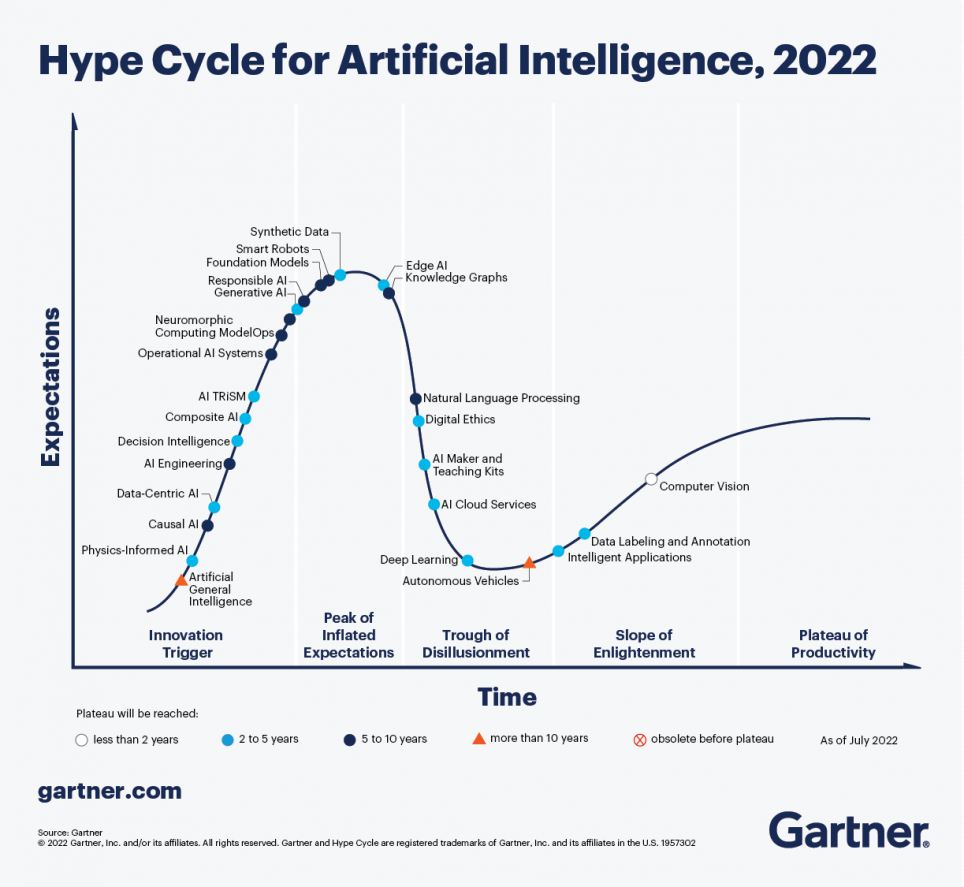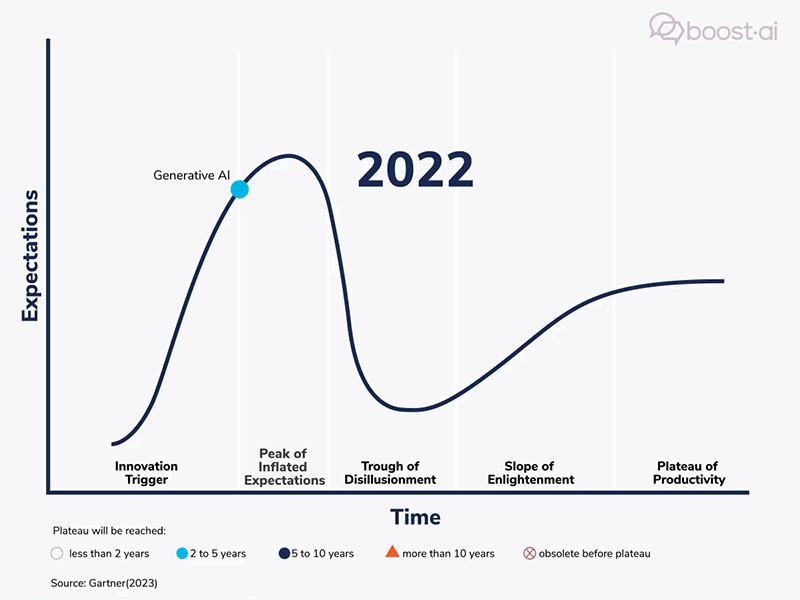The world's leading research and advisory firm is bullish about the conversational AI market trends over the next two to five years.
he reverberations created by Large Language Models (LLMs) and their ilk are being felt from the boardroom to the contact center and everywhere in between. As such, this year’s highly-anticipated Hype Cycle for Artificial Intelligence from Gartner has undergone a major overhaul. So, what’s all the buzz about? Let’s dive in.

First off, what's a "Hype Cycle", anyway? Think of it as a roadmap that Gartner, the leading research firm, creates to help businesses understand the maturity and adoption of various technologies. It's like your tech-savvy friend telling you what's hot and what's not. And this year, you guessed it, generative AI is the star of the show.
"Early adoption of these innovations will lead to significant competitive advantage and ease the problems associated with utilizing AI models within business processes." - Afraz Jaffri, Gartner Director Analyst
Generative AI: the double-edged sword
A mere 12 months ago, not just Gartner but almost every major industry expert, couldn’t have accurately predicted the meteoric rise of generative AI. In fact, the technology merited only a brief mention in the 2022 AI Hype Cycle, straddling the line between “Innovation Trigger” and the “Peak of Inflated Expectations”, where it now sits proudly at the summit.

Fast forward to today, and generative AI is the dominant AI paradigm, thanks to systems like ChatGPT and Midjourney making waves. It has become a game-changer, forcing many to rethink their AI strategies beyond simply automating tasks to the fundamentals of how businesses operate. So much so that even within the 2023 Hype Cycle, Gartner breaks down the various AI technologies listed into two key aspects:
1. Innovations fueled by GenAI:
- Think of generative AI being the engine that drives new technologies. For instance, it’s making strides in content creation and customer experience.
2. Innovations that fuel GenAI:
- On the flip side, there are technologies that make generative AI even more potent - like AI simulation and data labeling.
"Generative AI exploration is accelerating, thanks to the popularity of stable diffusion, midjourney, ChatGPT and large language models." - Svetlana Sicular, Gartner VP Analyst
The AI technologies you should keep an eye on
Taking this framework into consideration, the report goes on to highlight a range of technologies that either complement or are propelled by generative AI. Understanding these is crucial for anyone looking to stay ahead in the rapidly evolving landscape of AI. Here are a few of the technologies that Gartner gives special focus to:
Innovations fueled by Generative AI
- Artificial General Intelligence (AGI): The hypothetical goal of a machine that can do any intellectual task a human can.
- AI Engineering: The backbone for scaling AI solutions in enterprises.
- Autonomic Systems: Self-managing systems that learn and adapt.
- Cloud AI Services: Tools and APIs that make AI accessible as cloud services.
Innovations that fuel Generative AI
- AI Simulation: Combines AI and simulation for training and testing AI agents.
- AI Trust, Risk, and Security Management: Ensures that AI models are fair, reliable, and secure.
- Causal AI: Goes beyond predictive models to prescribe effective actions.
- Data Labeling and Annotation: Enhances data for better AI outcomes.
What about conversational AI?
Gartner doesn’t explicitly single out conversational AI in this year’s Hype Cycle, but its influence is still felt throughout. Technologies like ‘AI Engineering’, ‘Autonomic Systems’ and ‘Operational AI Systems’ are all critical components that make conversational AI platforms more robust, scalable and effective.
Conversational AI is a key enabler in automating customer and employee experiences, a point that aligns well with Gartner’s emphasis on “decision intelligence” and “ease of utilizing AI models within business processes.” It’s not just about answering customer questions, it’s about providing seamless, personalized experiences that can drive business outcomes.
As we’ve covered in past issues of Pulse, the synergy between generative and conversational AI goes hand in hand. Generative models like GPT-4 can be employed in conversational AI systems to make interactions more natural and context-aware, while simultaneously leveraging those systems to provide responsible guardrails, improving accuracy and reducing “hallucinations”.
This synergy is likely why Gartner places such a strong emphasis on generative AI — it’s a technology that has ripple effects, enhancing other forms of AI, both the conversational variety and beyond.
